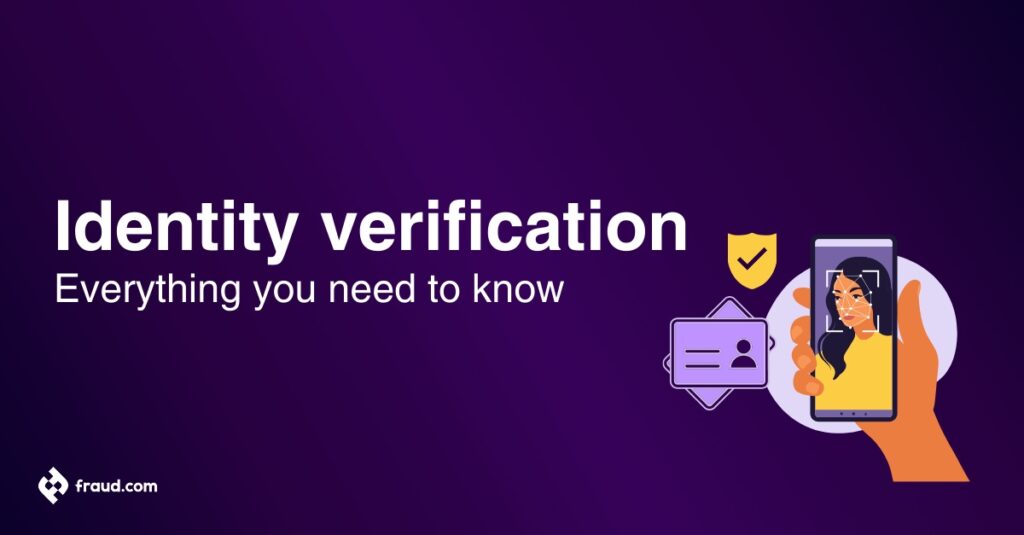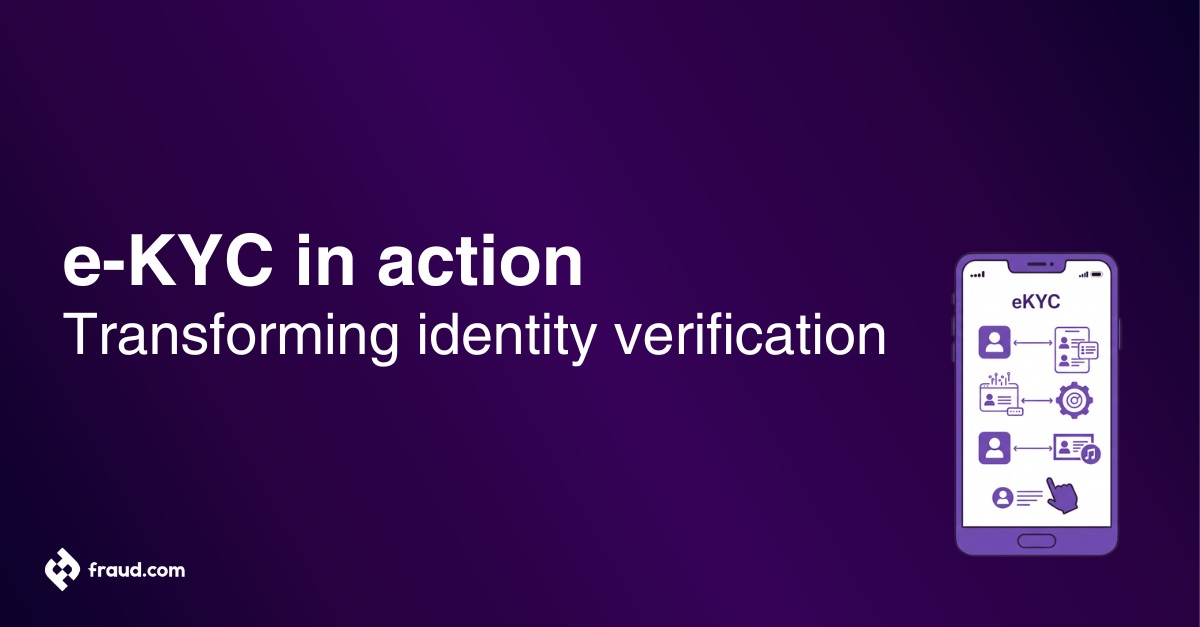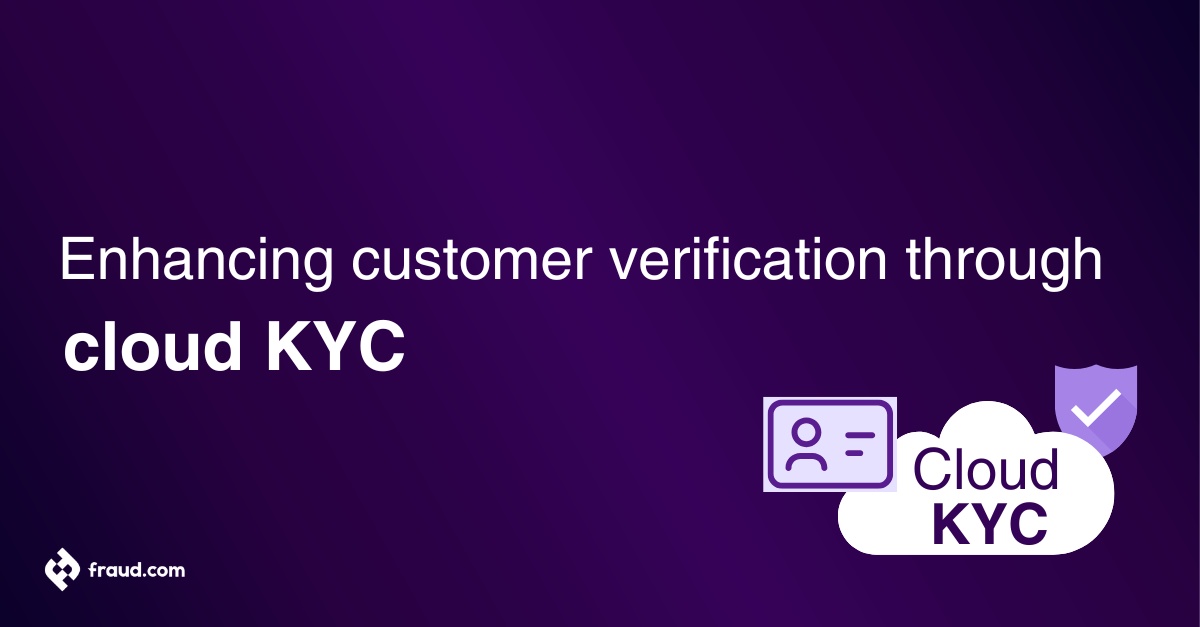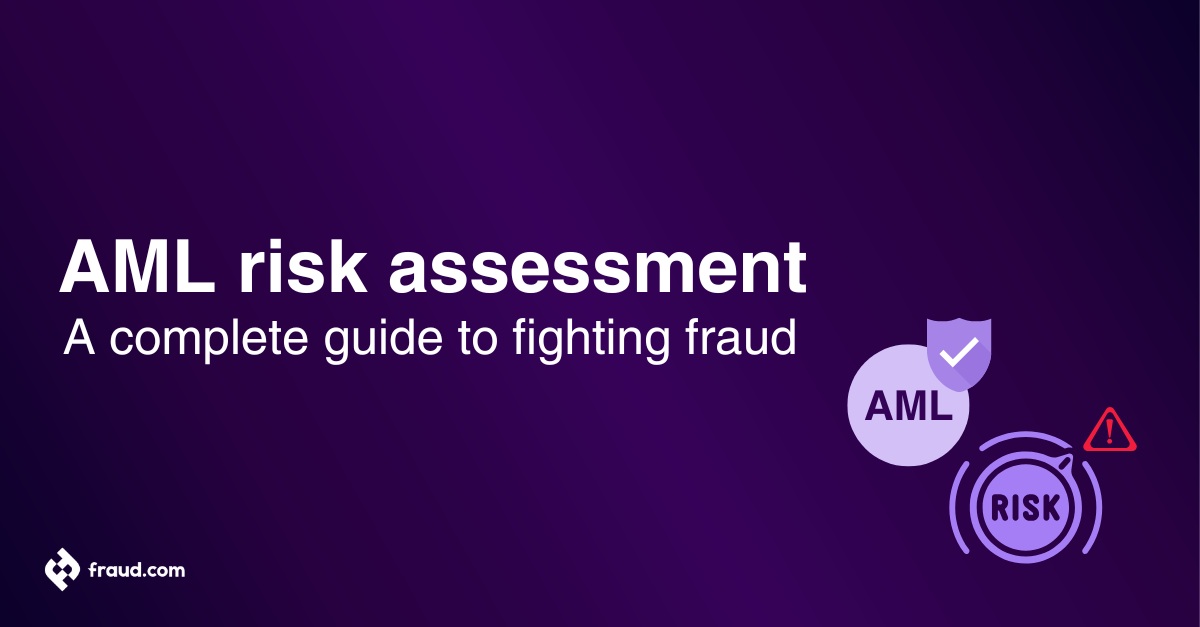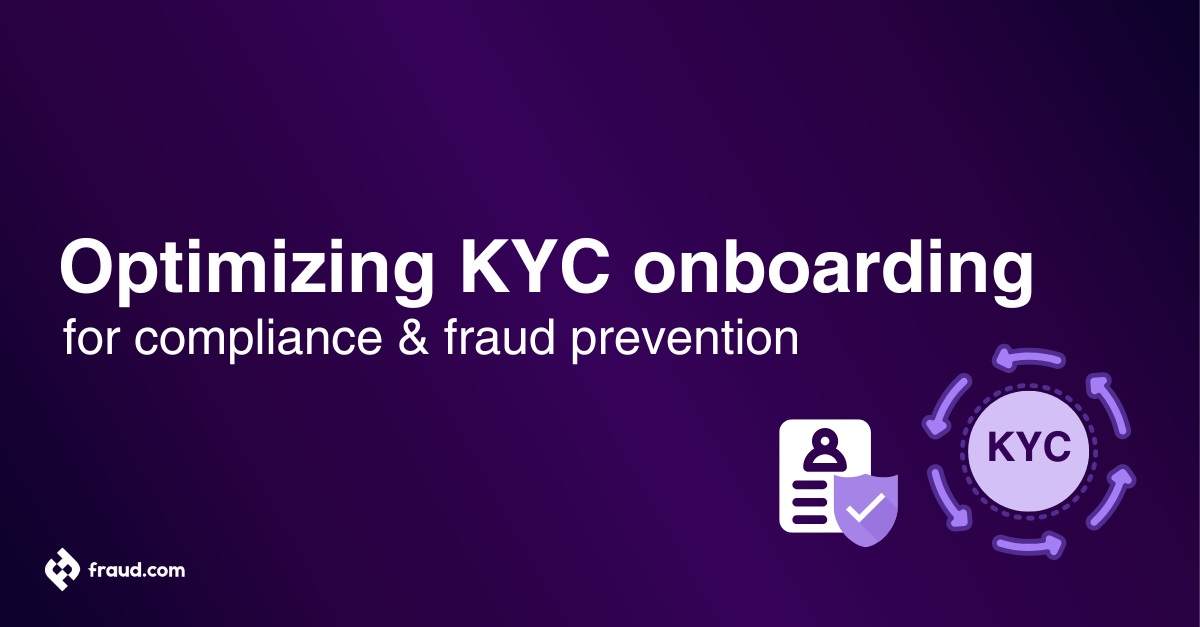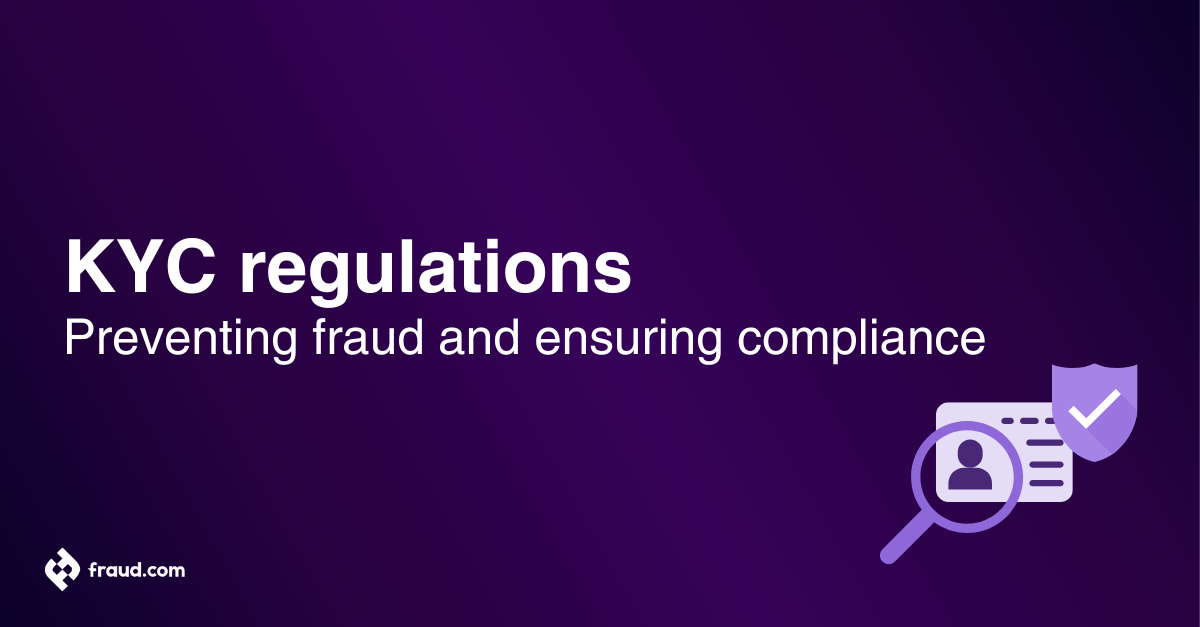Identity verification is a crucial aspect of securing user interactions and safeguarding sensitive information. It protects personal data, follows regulations, and builds trust in user engagement. From online banking to e-commerce and telemedicine, our everyday activities exemplify the need for identity verification. In light of this, it is essential to comprehend what identity verification entails, why it matters, and how it is implemented across various sectors.
This necessity bears an even greater weight given the risk of fraud. Hackers and fraudsters employ more sophisticated methods to manipulate vulnerabilities and exploit data, amplifying the risks for individuals and businesses alike. Verifying identities is now essential due to the constantly changing risk landscape.
A comprehensive understanding of identity verification will not only make you more vigilant but will also guide you in the decision-making process when choosing a service provider. A business’s success and reliability today rely on secure, accurate, and efficient identity verification systems.
Table of Contents
ToggleWhat is identity verification?
Identity verification is the process of validating the accuracy of a person’s claimed identity. This process may involve confirming authenticity using identity documents or via liveness detection procedures. The objectives are twofold: to protect businesses from fraudulent activities such as identity fraud and to safeguard customers’ data, offering an additional layer of security in digital platforms.
Moreover, the identity verification process empowers organisations to confirm an individual’s authenticity in real-time, bypassing traditional methods that are slow and prone to errors. It goes beyond mere identification to provide an identity verification service that is accurate, reliable, and consistent in mitigating risks associated with digital transactions.
Whether it’s verifying a new customer during account setup, conducting age validation for age-restricted products, or confirming the identity of a user requesting a service, identity verification serves as a foundational element of a secured digital environment.
How identity verification works
Understanding how identity verification works is essential for businesses and individuals alike to navigate the digital landscape safely and securely. This section will delve into the key components and processes involved in identity verification.
ID check
One of the fundamental steps in identity verification is the ID check. This process involves verifying the authenticity of identity documents provided by the individual, such as driver’s licenses, passports, or national identification cards. Advanced technological solutions, including Optical Character Recognition (OCR), Near Field Communication (NFC) and document verification algorithms, are often employed to detect fraudulent documents and ensure their validity.
Selfie verification
Selfie verification is a crucial step in modern identity verification processes. Individuals are required to capture a live image of themselves using their device’s camera. The system then compares this selfie to the photo on the provided identity document to ensure consistency. Advanced facial recognition algorithms analyze facial features to verify the individual’s identity accurately.
Liveness detection
Liveness detection is a sophisticated technique used to ensure that the selfie provided during verification is from a live person and not a static image or video. Various methods, such as requesting the individual to perform specific actions like blinking, smiling, or turning their head, are used to detect liveness. Advanced computer vision algorithms analyze these actions in real-time to confirm the authenticity of the selfie.
Biometric authentication
Biometric authentication involves using unique biological traits, such as fingerprints or iris scans, to verify an individual’s identity. Biometric data is highly secure as it is difficult to replicate or forge. Many identity verification systems incorporate biometric authentication as an additional layer of security, especially for high-risk transactions or sensitive operations.
Knowledge-Based Authentication
Knowledge-Based Authentication (KBA) involves asking the individual specific questions based on their personal information to confirm their identity. These questions may include details about their past addresses, financial history, or other personal information not readily available to impostors. Knowledge-based verification adds an extra layer of security by requiring individuals to prove their identity through personal knowledge.
Behavioural analysis
Behavioural analysis is a sophisticated method that evaluates patterns of behaviour to verify identity. This may include analyzing typing speed, mouse movements, or other behavioural biometrics unique to the individual. Behavioural analysis adds an additional layer of security by detecting anomalies or suspicious behaviour during the verification process.
In summary, identity verification is a multifaceted process that combines various methods, including document verification, biometric authentication, and behavioral analysis, to confirm an individual’s identity accurately and securely. By leveraging advanced technologies and adopting multiple verification steps, businesses can enhance security, prevent fraud, and build trust with their customers in today’s digital age.
What is identity verification used for?
Identity verification serves a crucial role in various scenarios, ensuring security, compliance, and trust in digital interactions. Here are some common applications of identity verification:
- Onboarding new customers: Identity verification is used to authenticate the identities of new customers during account registration processes, ensuring that only legitimate individuals gain access to services or platforms.
- Authenticating transactions: Identity verification helps authenticate transactions, ensuring that only authorized individuals can initiate and complete financial transactions securely.
- Verifying users: Identity verification confirms the identities of users accessing online platforms, applications, or services, enhancing security and preventing unauthorized access.
- Preventing fraud: Identity verification is instrumental in preventing fraudulent activities such as identity theft, account takeover, and unauthorized transactions by validating the identities of individuals involved in digital interactions.
- Compliance with regulations: Identity verification ensures compliance with regulations such as Know Your Customer (KYC), Anti-Money Laundering (AML), and Customer Due Diligence (CDD), which mandate the verification of customers’ identities to prevent financial crimes and ensure transparency in financial transactions.
- Enforcing age restrictions: Identity verification is used to enforce age restrictions for age-sensitive content or services, ensuring that only individuals of legal age gain access to restricted content or services while complying with relevant regulations and policies.
In summary, identity verification is employed across various scenarios to enhance security, prevent fraud, comply with regulations, and enforce age restrictions in digital interactions, ensuring the integrity and trustworthiness of online transactions and services.
Why is identity verification important?
Identity verification plays a pivotal role in safeguarding digital interactions, protecting sensitive information, and fostering trust between individuals and businesses. Here are several reasons why identity verification is crucial:
- Security: Identity verification enhances security by preventing unauthorized access and reducing the risk of identity theft and fraud.
- Fraud prevention: Identity verification helps prevent fraudulent activities by verifying the identities of individuals involved in digital transactions.
- Compliance: Identity verification ensures compliance with regulations such as KYC, AML, and CDD, reducing the risk of financial crimes and legal penalties.
- Trust and confidence: Identity verification fosters trust between individuals and businesses, enhancing the overall customer experience.
- Risk mitigation: Identity verification helps assess and mitigate risks associated with digital transactions and compliance violations.
- Regulatory compliance: Identity verification is essential for complying with industry-specific regulations and maintaining the integrity of operations.
In summary, identity verification is important for enhancing security, preventing fraud, ensuring compliance with regulations, fostering trust and confidence, mitigating risks, and maintaining the integrity of digital interactions in various industries and sectors. By implementing robust identity verification processes and technologies, businesses can effectively verify the identity of users, protect sensitive information, mitigate risks, and build trust with their customers in today’s digital landscape.
Types of identity verification methods
Identity verification leverages different methods based on the information available and the level of security required. These include:
Knowledge-based verification: This method asks users for a piece of information that supposedly only they know, which could include:
- Passwords
- Security Questions
- Personal information such as date of birth or social security number
Possession-based verification: Here, the users need to show proof that they possess something. Techniques in this category include:
- Physical tokens or smartcards
- Access to a specific email account or phone number
- One-time password verification (OTP)
Inherence-based verification: With this method, the users prove their identity by showing something that is a part of them. A few common methods in this category are:
- Biometric authentication
- Fingerprint Scanning
- Facial Recognition
- Voice Recognition
Every method has its strengths and is suited for different types of applications. The choice of method in any given situation will depend on various factors like the required level of security, user convenience, and available technology.
Identity verification processes and technologies
The identity verification process typically involves ID document verification, biometric matching, or machine learning algorithms, among others. These technologies must be scalable, reliable, and user-friendly, enabling comprehensive and efficient identity verification.
Recent advancements in technology have given rise to a range of sophisticated methods and tools for identity verification. Many businesses opt for multi-factor authentication to enhance security. From AI-powered recognition systems to data analytics, it is the mix of the right technologies that provide optimal verification solutions. Ensuring these tools are easily integrable with existing systems is of paramount importance for their easy adoption and use.
Here are some key areas involved in identity verification processes and technologies:
- Document verification: This involves verifying the authenticity of identity documents such as driver’s licenses, passports or ID cards. Advanced scanning technologies and Artificial Intelligence (AI) are used to assess if the documents are genuine and valid.
- Biometric verification: Authentication using unique biological traits of the individual such as fingerprints, facial recognition, iris/retina scan etc.
- Liveness detection: To ensure that the individual is present in real-time while performing identity verification, methods like 3D selfie technology or eye movement tracking are used.
- Data cross-checking: Information provided by the individual is cross-verified with databases, such as credit files or public records for consistency and correctness.
- AI & Machine Learning: AI algorithms can learn and improve from the data they process, making identity verification more reliable and efficient over time.
- Risk-based authentication: The type and level of authentication measures applied are in line with the level of risk associated with the transaction.
Incorporating a mixture of these processes and technologies can ensure a fool-proof identity verification system, verifying the authenticity of an individual beyond a reasonable doubt.
Benefits of identity verification
Identity verification provides numerous advantages for individuals, businesses, and society:
- Enhanced security: Strengthens security measures, reducing the risk of data breaches and fraudulent activities.
- Fraud prevention: Helps prevent identity theft and account takeover, protecting both individuals and businesses.
- Compliance: Ensures adherence to regulatory requirements, mitigating the risk of non-compliance penalties.
- Improved customer experience: Reduces friction during onboarding and transactions, leading to higher satisfaction and loyalty.
- Trust and confidence: Builds trust between parties, essential for fostering long-term relationships.
- Efficiency and cost savings: Streamlines operations and minimizes manual effort, resulting in cost savings.
- Risk mitigation: Helps identify and mitigate risks associated with fraudulent activities and compliance violations.
- Access to services: Facilitates access to essential services such as banking and healthcare securely.
- Inclusive growth: Promotes participation in the digital economy, empowering individuals from diverse backgrounds.
Identity verification services
Identity verification services encompass a range of tools and technologies aimed at authenticating individuals’ identities in various digital interactions. These services play a crucial role in ensuring security, preventing fraud, and complying with regulations. Here are some key components of identity verification services:
ID verification
ID verification involves validating the authenticity of identity documents provided by individuals, such as passports, driver’s licenses, or national identification cards. Advanced algorithms and technologies are employed to detect fraudulent documents and verify their validity.
Selfie verification
Selfie verification requires individuals to capture a live image of themselves using their device’s camera. This image is then compared to the photo on the provided identity document to ensure consistency and authenticate the individual’s identity.
Liveness detection
Liveness detection is a sophisticated technique used to ensure that the selfie provided during verification is from a live person and not a static image or video. Various methods, such as requesting the individual to perform specific actions like blinking or smiling, are used to detect liveness.
Biometric authentication
Biometric authentication uses unique biological traits, such as fingerprints, facial features, or iris scans, to verify an individual’s identity. Biometric data is highly secure and difficult to replicate, providing an additional layer of security in identity verification processes.
Knowledge-based verification
Knowledge-based verification involves asking individuals specific questions based on their personal information to confirm their identity. These questions may include details about past addresses, financial history, or other personal information not readily available to impostors.
Behavioral analysis
Behavioral analysis evaluates patterns of behavior, such as typing speed or mouse movements, to verify an individual’s identity. By analyzing these behavioral biometrics, identity verification services can detect anomalies or suspicious behavior indicative of fraudulent activity.
Document authentication
Document authentication verifies the authenticity of identity documents by analyzing features such as holograms, watermarks, and security patterns. Advanced algorithms and optical character recognition (OCR) technology are used to detect fraudulent documents and ensure their validity.
Mobile verification
Mobile verification utilizes mobile devices’ capabilities, such as GPS location tracking and device fingerprinting, to verify individuals’ identities. By leveraging mobile technology, identity verification services can enhance security and prevent unauthorized access to services or platforms.
Industries and use cases for identity verification
In an increasingly digital world, the seamless integration of identity verification across various industries is pivotal for fostering trust, ensuring security, and maintaining regulatory compliance.
- Financial services
Financial institutions are at the forefront of industries that significantly benefit from identity verification services. In the context of persistent and evolving threats, such as money laundering and identity theft, stringent identity verification processes are fundamental. They support institutions in complying with identity verification regulations such as Know Your Customer (KYC), ensuring due customer diligence, and robustly combating fraud. Identity verification methods encompass confirmations of personal details, such as verifying your identity documents, phone number, and date of birth, providing much-needed protection against potential financial crimes.
- E-commerce/Online marketplaces
Online marketplaces and e-commerce platforms also gain substantial advantages from identity verification. These platforms are consistently processing high volumes of transactions, many of which involve sensitive customer data. Through identity verification, e-commerce platforms can significantly reduce fraud risk, building a secure environment for both buyers and sellers. ge verification, buyer/seller authentication, and strong identity verification are crucial for trustworthy online transactions.
- Healthcare/Telemedicine
In the realm of healthcare and telemedicine, identity verification is more than just a compliance requirement; it’s a safeguard for both patients and providers. In light of the growing digitisation of medical records and the emergence of telemedicine, ensuring a secure and dependable method to verify IDs is crucial for protecting sensitive patient information and improving service efficiency. Healthcare providers can use biometric identity verification systems to protect patient data, prevent medical identity theft, and comply with compliance requirements.
Identity verification FAQ
Here are some frequently asked questions about identity verification:
| Question | Answer |
|---|---|
| What is identity verification? | Identity verification is the process of confirming the accuracy of a person’s claimed identity. |
| Why is identity verification important? | Identity verification is crucial for security, fraud prevention, compliance, and trust-building. |
| How does identity verification work? | Identity verification typically involves document checks, biometric authentication, and risk-based decision-making. |
| What industries use identity verification? | Industries such as finance, healthcare, e-commerce, and government use identity verification. |
| What regulations govern identity verification? | Regulations like KYC, AML, and GDPR impose requirements for identity verification in various sectors. |
| What technologies are used for identity verification? | Technologies include document scanning, biometric authentication, and machine learning algorithms. |
| How can identity verification benefit businesses? | Identity verification enhances security, prevents fraud, ensures compliance, and builds trust with customers. |
| What are the challenges of identity verification? | Challenges include balancing security with user experience, handling sensitive data, and keeping up with evolving fraud tactics. |
| Is identity verification safe and secure? | Yes, when implemented correctly, identity verification processes are designed to be safe, secure, and compliant with regulations. |
| How can individuals verify their identity online? | Individuals can verify their identity online through various methods, including document uploads, biometric scans, and knowledge-based questions. |
Identity verification by Udentify
Udentify is your go-to solution for establishing the real identity of your customers, employees, business partners, patients, students, and gamers in just a few seconds during the account creation and onboarding process.
Our biometric identity suite is built on cutting-edge technology. It combines artificial intelligence (AI) driven facial and voice recognition with advanced passive liveness detection, delivering an unparalleled anti-spoofing identity and reusable biometrics solution. This robust system provides comprehensive coverage across mobile, web, and even telephone channels.
What truly sets Udentify apart is its ability to simplify and secure a user’s entire transaction lifecycle without friction or contributing to fraud. Our protective measures ensure the verification of identity documents, and even a user’s birth date, rapidly and securely.
With Udentify, we have introduced an effortless passwordless authentication system that’s beloved by users and scorned by fraudsters. Users can securely access services with just a scan of their faces, a few spoken words, or both, creating an unprecedentedly secure authentication process.
This innovative approach not only outperforms traditional, less secure password systems but also provides users with a fast, frictionless experience that reduces operational costs. It’s an advanced solution designed to comprehensively ensure identity verification, ultimately helping us create a world that’s safer than ever before.

